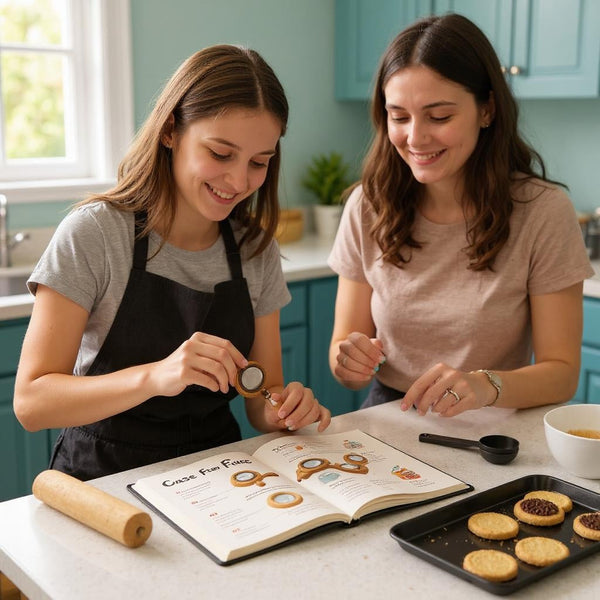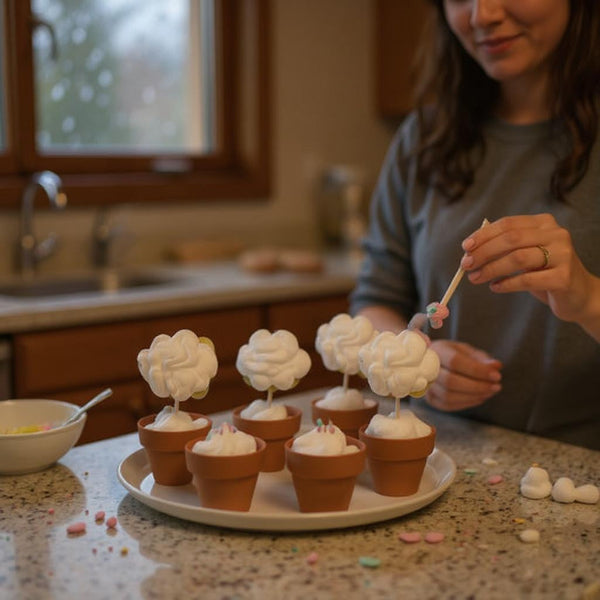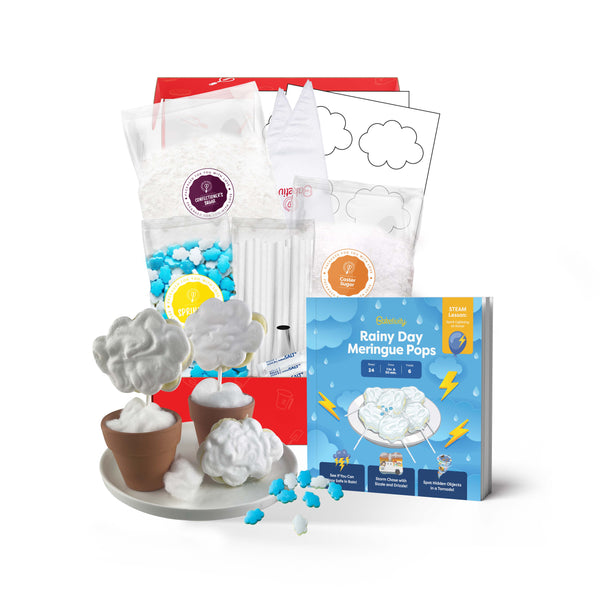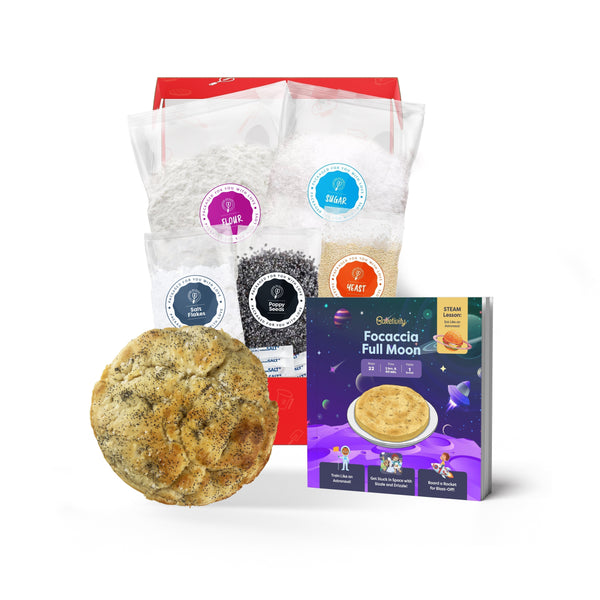Do you want to add some excitement to your homeschooling routine? Why not incorporate some fun baking experiments into your curriculum? Not only will your kids have a blast, but they'll also learn valuable science and math concepts along the way. In this article, we'll explore a variety of baking experiments suitable for learners of all ages. So let's get started and have some deliciously educational fun!
Understanding the Basics of Baking
Before we dive into the experiments, let's take a moment to understand the science behind baking. Baking is essentially a chemical reaction where ingredients like flour, sugar, and eggs transform into a delicious treat in the oven. This transformation occurs due to various factors such as heat, leavening agents, and the Maillard reaction, which gives baked goods their golden brown color and rich flavors.
The Science Behind Baking
If you've ever wondered why your cookies rise or why your cake becomes fluffy, it's all thanks to the magic of science! Baking involves the combination of dry ingredients like flour and baking powder with wet ingredients like eggs and milk. As the mixture heats up in the oven, the proteins in the flour and eggs undergo changes that give structure and texture to your baked goods.
But let's not forget about the role of fats in baking. Fats, such as butter or oil, play a crucial role in creating tender and moist baked goods. They coat the proteins in the flour, preventing them from forming too much gluten, which can result in a tough texture. Fats also add richness and flavor to your treats, making them even more irresistible.
Leavening agents such as baking powder or yeast create gas bubbles in the batter or dough, causing it to rise. This process, known as fermentation, results in lighter and airy textures. The release of carbon dioxide gas during fermentation creates pockets of air, giving your baked goods that delightful fluffiness.
The Maillard reaction occurs due to the interaction between proteins and sugars in your batter, resulting in the desirable browning and flavor development. This reaction is responsible for the golden crust on your bread, the caramelization of sugar on your cookies, and the rich flavors in your cakes. It's like a symphony of flavors and colors happening right in your oven!
Essential Baking Tools for Beginners
Before you embark on your homeschool baking adventures, make sure you have the right tools at your disposal. Here are a few essentials to get you started:
- Measuring cups and spoons: Accurate measurements are crucial in baking, so invest in a reliable set of measuring tools. Remember, baking is all about precision!
- Mixing bowls: You'll need a variety of sizes for mixing dry and wet ingredients. Having multiple bowls allows you to keep your ingredients separate and organized.
- Whisk or spatula: These tools are indispensable for mixing and folding ingredients together. A whisk is perfect for beating eggs or incorporating air into your batter, while a spatula is great for gently folding in delicate ingredients.
- Baking pans: Start with a basic cookie sheet and cake pan. Gradually expand your collection as you explore different recipes. Consider investing in a non-stick baking mat or parchment paper for easy release and cleanup.
- Oven thermometer: Maintaining the right temperature is crucial for baking success. An oven thermometer ensures accuracy, as oven temperatures can vary and affect the outcome of your baked goods.
- Cooling rack: Once your baked goods are out of the oven, you'll want to cool them properly. A cooling rack allows air to circulate around your treats, preventing them from becoming soggy on the bottom.
With these essential baking tools in your kitchen, you'll be well-equipped to embark on your baking journey. So put on your apron, preheat that oven, and let the delicious aromas fill your home!
Incorporating Baking into Your Homeschool Curriculum
Baking offers a multitude of benefits for kids beyond just satisfying their sweet tooth. So why not make it a regular part of your homeschooling curriculum? Here are a few reasons why baking is educational and fun:
Not only does baking provide a delicious end result, but it also offers numerous learning opportunities for children. From enhancing their math skills through measuring ingredients and understanding concepts like fractions and proportions to boosting their reading comprehension and ability to follow instructions, baking serves as a multi-faceted educational tool. Moreover, engaging in baking activities fosters creativity and helps build children's confidence in the kitchen.
Benefits of Baking for Kids
Besides being a delicious hobby, baking offers various learning opportunities for kids. It helps improve their math skills as they measure ingredients, follow recipes, and understand concepts like fractions and proportions. Baking also enhances their reading comprehension and following instructions. Plus, it fosters creativity and boosts their confidence.
Furthermore, baking can also teach children essential life skills such as patience, organization, and teamwork if they are baking with siblings or friends. The process of following a recipe from start to finish instills a sense of accomplishment and responsibility in children, making them more independent and capable individuals.
How to Make Baking Educational
Now that you know the benefits, you might be wondering how to make baking an educational experience for your kids. Here are a few ideas:
- Encourage them to read and analyze recipes to understand the step-by-step process.
- Discuss the science behind baking as you work together in the kitchen.
- Measure ingredients using both standard and metric systems to introduce measurement conversions.
- Explore the history and cultural significance of various baked goods.
Easy Baking Experiments for Young Learners
Now that you're ready to dive into some baking experiments, let's start with a few easy ones suitable for young learners:
Baking Soda and Vinegar Reaction
This classic experiment is not only entertaining but also teaches kids about chemical reactions. Mix baking soda with vinegar, and watch as it fizzes and bubbles. Discuss the gas release and explain the concept of carbon dioxide formation.
It's fascinating to note that the reaction between baking soda (sodium bicarbonate) and vinegar (acetic acid) is an acid-base reaction. When these two ingredients combine, they create carbonic acid, which rapidly breaks down into carbon dioxide gas, causing the bubbling effect. This simple yet captivating experiment is a great way to introduce young learners to the wonders of chemistry in a safe and interactive manner.
Yeast Fermentation Process
Introduce your kids to the wonderful world of yeast by making dough together. As the yeast ferments, it releases carbon dioxide, causing the dough to rise. Kids will be amazed by the transformation, and you can explain the science behind fermentation.
Yeast, a single-celled fungus, plays a crucial role in the fermentation process by converting sugars into carbon dioxide and alcohol. This metabolic process not only leavens the dough, making it rise, but also adds flavor and texture to baked goods. By engaging in this experiment, children can witness firsthand how tiny microorganisms can have a big impact on the food we eat, making learning about biology both fun and delicious.
Intermediate Baking Experiments for Older Kids
For older kids ready to tackle more complex concepts, here are a couple of intermediate baking experiments to try:
Exploring Gluten Formation
Gluten is the protein responsible for the elasticity of dough. Help your kids understand this concept by comparing dough made with bread flour (high in gluten) and cake flour (low in gluten). Explore the differences in texture and explain the role of gluten in achieving the desired structure in bread.
Furthermore, you can take this experiment a step further by introducing different hydration levels to the dough and observing how it affects gluten development. Higher hydration levels lead to more extensible dough, resulting in larger air pockets in the bread, while lower hydration levels create a tighter crumb structure.
The Maillard Reaction in Baking
Engage your older learners by delving into the Maillard reaction. Encourage them to experiment with different baking times and temperatures to observe the changes in color and flavor. Discuss the role of this reaction in creating the tasty crust on bread or the caramelization of sugar in desserts.
To expand on this concept, you can explore the effect of pH on the Maillard reaction. Introduce acidic ingredients like sourdough starter or vinegar to the dough and note how it enhances the Maillard reaction, resulting in a deeper brown color and more complex flavors in the final baked goods.
Advanced Baking Experiments for Teens
For aspiring bakers ready to take their skills to the next level, here are a couple of advanced experiments:
Understanding the Role of Emulsifiers
Emulsifiers play a crucial role in creating stable mixtures of ingredients that wouldn't naturally combine. Guide your teens in experimenting with emulsifiers like lecithin or egg yolks. Discuss how emulsifiers help achieve a smooth texture in products like mayonnaise or cake batter.
The Science of Sugar Caramelization
Deepen your teens' understanding of sugar's transformative qualities by exploring the caramelization process. Have them experiment with different sugar types and temperatures to observe the stages of caramelization. Discuss the chemical changes that occur, resulting in the rich flavors and golden hues found in countless desserts.
So whether your kids are just starting their homeschool journey or are seasoned learners, these baking experiments are sure to bring excitement and education to your routine. From understanding the science behind baking to exploring advanced concepts, there's something for everyone. So put on your aprons, gather your ingredients, and have fun baking together!




